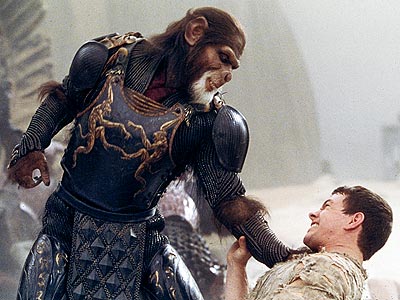Film Friday
The early 1930’s may have been a grim time for America but they were a great time for movies as the rage of Americans over the Great Depression (25% of Americans were unemployed in 1932) got channeled into explosive new genres.
Today we have only to look at our current movies to realize how severe our economic plight is and how close we came to another Great Depression in 2008. Except for a few chlidren’s movies, our top grossing films are very, very angry.
During the 1930’s, America saw the rise of two of the most enduring movie genres, the gangster film and the monster film. Audiences took a vicarious delight in seeing Edgar G. Robinson (in Little Caesar), Tom Cagney (in Public Enemy) and Paul Muni (in Scarface) grab for the American dream in the only way that seemed possible at the time. They also probably vicariously vented their rage through watching the Frankenstein monster, Dracula, and King Kong smash society, even though the rage was always safely put back in the box by the movie’s end. At a time when all the structures seemed to be breaking down, one might as well indulge in one’s forbidden impulses, whether through Mae West’s in-your-face sexuality or the Marx Brothers’ anarchism.
It’s noteworthy how many of today’s top box office films deal with end-of-civilization scenarios. This year, for instance, Rise of the Planet of the Apes and Harry Potter and the Deathly Hallows II are taking theaters by storm, and Captain America’s struggle against the ultimate terrorist weapon has also done well.
A quick look at the most popular films from 2006 (when the bottom started dropping out of the economy) shows that, other than a few children’s movies (Toy Story 3, Shrek III, Up), the top films are almost universally apocalyptic. Here they are:
- Avatar (2009)
- The Dark Knight (2008)
- Pirates of the Caribbean: Dead Man’s Chest (2006)
- Transformers: Revenge of the Fallen (2009)
Other big hits include Spiderman III, the first Transformers film, the two Iron Man movies, and Pirates of the Caribbean: At the World’s End.
It’s noteworthy that a number of these films also fantasize about everyman super heroes rising up to save us. If we conclude that Barack Obama is not the one, will we begin fantasizing about Mitt Romney, Rick Perry, or Sarah Palin? Or can only the movies live up to our longings?
Incidentally, the presence of a few children’s films on the list is not surprising. We may be using them to escape from our grim reality. After all, for much of the 1930’s America’s most popular actors were Shirley Temple, Mickey Rooney, and Judy Garland while Snow White and The Wizard of Oz trailed only Gone with the Wind as the highest grossing films of the decade.
Hollywood’s angry period did not last. By the middle of the decade, people decided they wanted to give Roosevelt’s New Deal a chance, and Hollywood started producing films where people work together. For instance, this was the golden age of the screwball comedy, launched by Frank Capra’s It Happened One Night in 1934. There may have been all out war between the sexes (and often classes) in these movies, but they always concluded with a “love triumphant” armistice.
Patience started wearing thin by the end of the decade, however, when it seemed like the Depression would never end. At that point the movies turned dark again. Examples are Grapes of Wrath, How Green Was My Valley, Citizen Kane and Rebecca.
If movies function as social barometers, then we should be rooting this year for The Help over Rise of the Planet of the Apes–which is to say, racial reconciliation over the unleashed id. Because if the apes end up winning, then we’re all in trouble.
Go here to subscribe to the weekly newsletter summarizing the week’s posts. Your e-mail address will be kept confidential.


